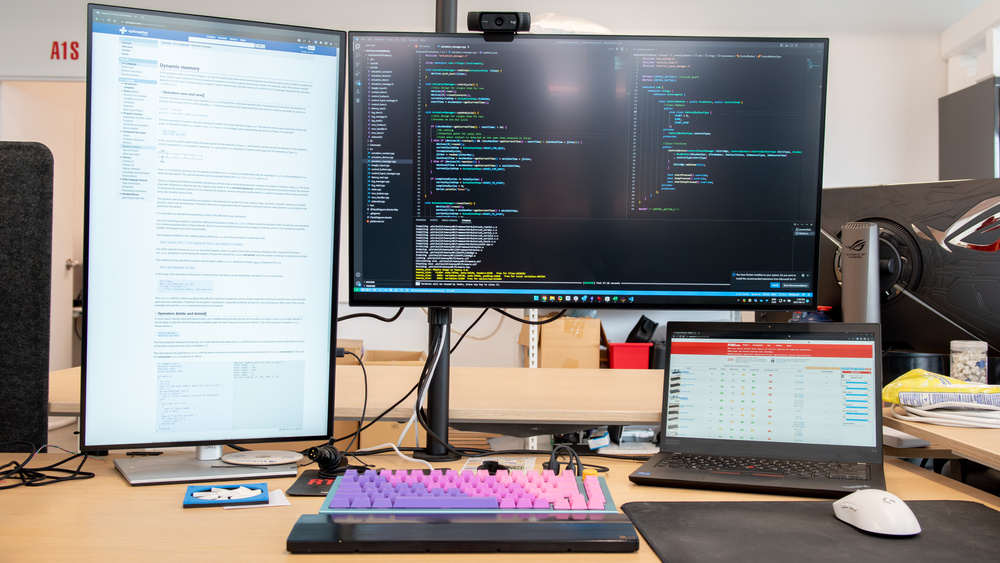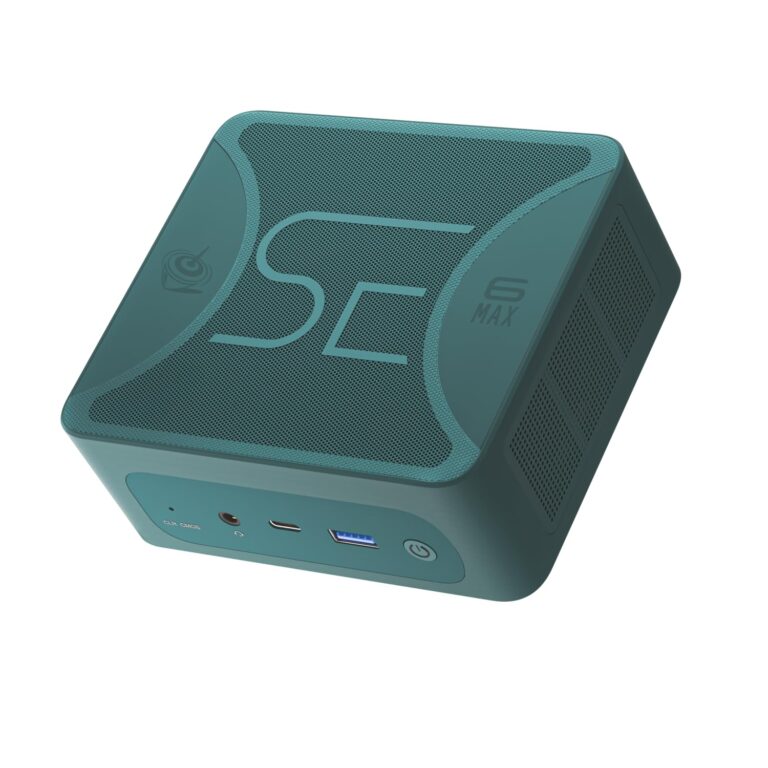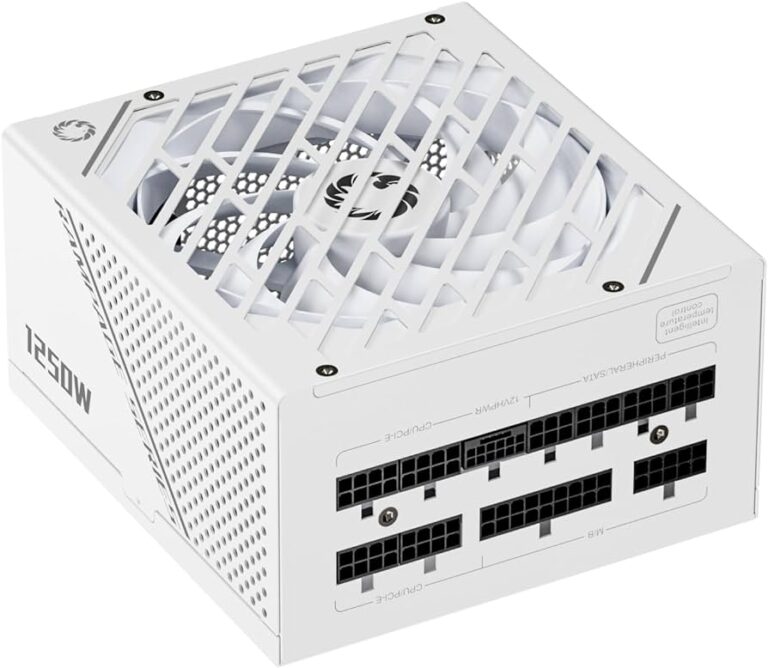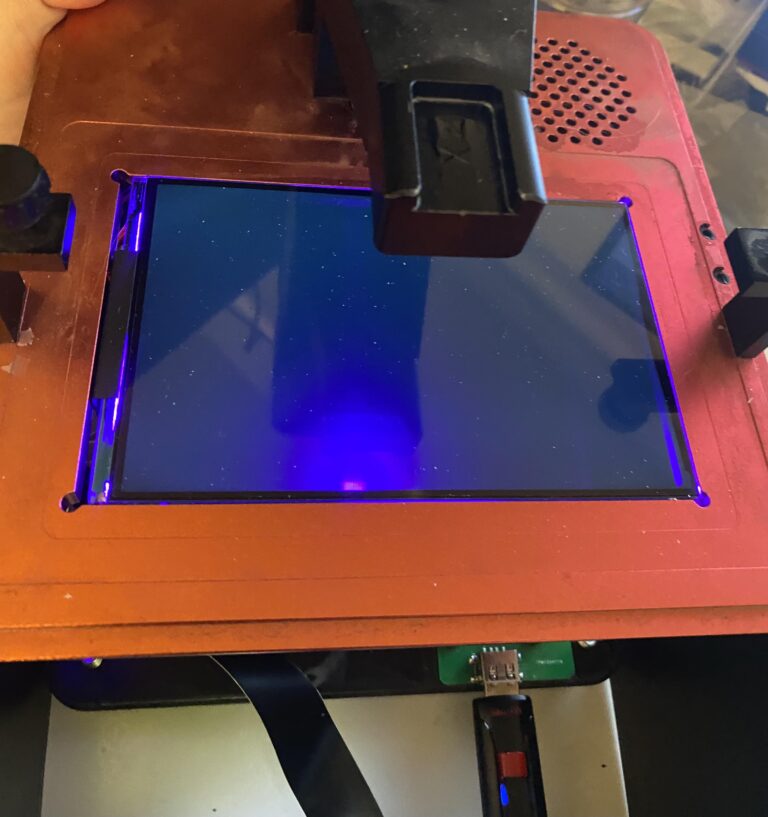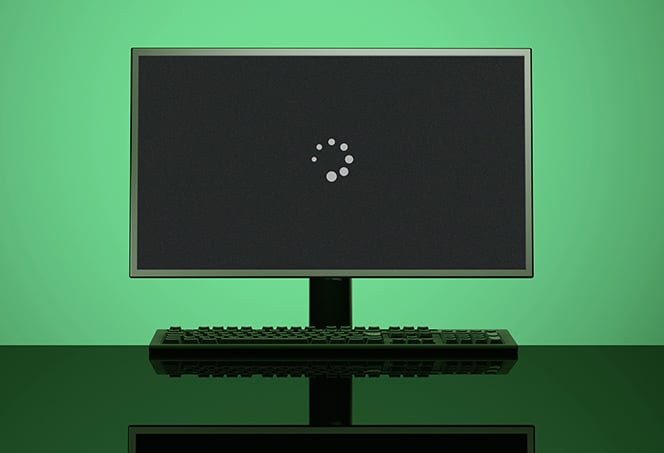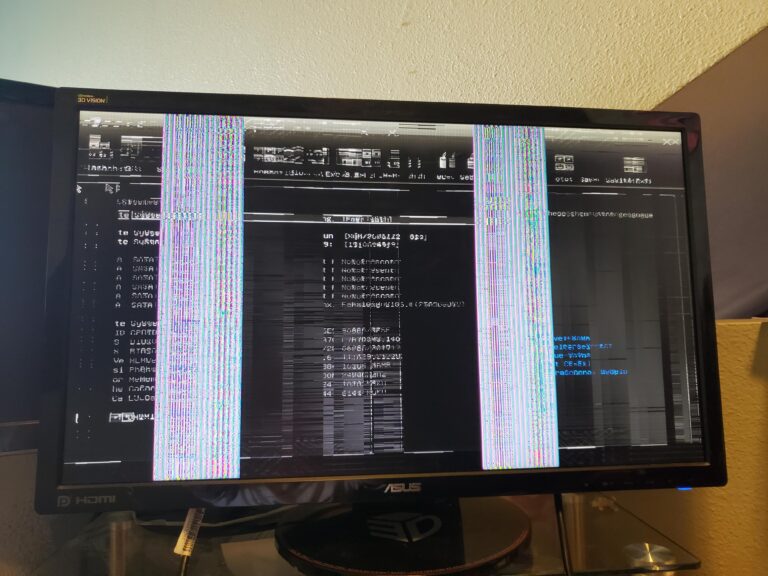Desk Not Deep Enough for Monitor: Find the Perfect Solution for a Thin-Depth Desk!
A desk not deep enough for a monitor can be solved by using a monitor arm designed for thin-depth desks. This allows you to bring the monitor up to a comfortable height and distance from your sitting position.
Alternatively, you can look for a new computer desk with good depth to accommodate your monitor properly. Finding the right desk size is important for your workspace to ensure maximum comfort and productivity. Ensure that the desk has enough depth to allow for proper monitor placement, where your fingers should be just about touching the screen when seated in your normal position.
Introduction (130 words): When it comes to setting up a comfortable workstation, the depth of your desk plays a crucial role in ensuring optimal ergonomics. However, it can be challenging when your desk isn’t deep enough to accommodate your monitor properly. Having a monitor at the wrong distance can strain your eyes and hinder your productivity. Fortunately, there are solutions available to address this issue. One effective solution is using a monitor arm specifically designed for thin-depth desks. This allows you to adjust the monitor’s height and distance from your sitting position, ensuring a comfortable viewing experience. Another option is to search for a new computer desk with good depth, providing enough space for your monitor to sit at an ideal distance. We will explore these solutions and discuss the importance of desk depth in creating an ergonomic workspace.
Desk Space Dilemma: Monitor Too Close?
Having a desk that is not deep enough for your monitor can be a dilemma. Finding a monitor arm for thin-depth desks can help you bring the monitor up to the proper eye level, ensuring comfort and productivity while working.
Explore different options to find the best solution for your desk space.
Understanding Common Issues With Monitor Placement
When it comes to setting up a workspace, the placement of your monitor plays a crucial role in your overall comfort and productivity. One common issue faced by many individuals is when their desk is not deep enough to accommodate the ideal positioning of their monitor. This can lead to a desk space dilemma, with the monitor placed too close to the user.
Space Economy Vs. Ergonomic Requirements
In our quest for space economy, we often end up choosing desks with thin-depth designs. While these desks may save space and look sleek, they can pose challenges when it comes to setting up an ergonomic workspace. The depth of a desk is crucial in determining the distance between your eyes and the screen, ensuring that it falls within the recommended guidelines.
Unfortunately, with a desk that is not deep enough, achieving the ideal distance between your eyes and the monitor becomes a challenge. This can lead to discomfort, eye strain, and even poor posture as you strain to view the screen at an uncomfortable angle.
Risk Of Eye Strain And Ineffective Workspace Management
Placing your monitor too close due to a shallow desk depth can have severe implications for your eye health. It can lead to eye strain, fatigue, headaches, and even long-term vision problems such as myopia. Moreover, having a monitor that is too close can also affect your overall workspace management.
With limited desk space, you may find it difficult to organize other essential items such as keyboard, mouse, documents, and other peripherals. This lack of space can hinder your productivity and make your workspace feel cluttered and inefficient.
Therefore, it is crucial to address the issue of a desk not deep enough for your monitor effectively. Whether it’s investing in a monitor arm suitable for thin-depth desks or considering alternatives like wooden support beams, finding a solution that allows for proper ergonomic setup is essential.
Ultimately, striking the right balance between space economy and ergonomic requirements is key to creating a comfortable and efficient workspace. By ensuring that your monitor is positioned at the optimal distance from your eyes and that you have enough room to organize other work essentials, you can avoid the detrimental effects of a desk space dilemma.
Ideal Desk Depth For Monitor Distance
Looking for a monitor arm for your desk that’s not deep enough? The ideal desk depth for monitor distance is when you sit in your normal position and extend your hand, with your fingers just about touching the screen. Find the perfect solution to make your setup work for you.
Ergonomic Standards For Desk Depth
When it comes to setting up an ergonomic workstation, the ideal desk depth for monitor distance plays a crucial role. According to ergonomic standards, a desk should have a sufficient depth that allows for proper placement of the monitor at an optimal viewing distance.
Poor desk depth may lead to discomfort, strain on the eyes, neck, and back, and even suboptimal posture. Therefore, it is essential to make sure that your desk is deep enough to accommodate your monitor properly.
Distance Recommendations From Experts
Experts recommend maintaining a comfortable viewing distance between you and your monitor to minimize eye strain and promote good posture. The optimal distance may vary depending on factors such as screen size, personal preferences, and the nature of your work.
As a general guideline, the American Optometric Association suggests a distance of approximately 20-28 inches (50-70 cm) between your eyes and the monitor. This distance helps reduce eye strain and allows you to view the screen without having to excessively strain your neck.
If your desk is not deep enough to achieve this recommended distance, you may need to make adjustments or consider alternative solutions such as monitor arms or mounts that allow for better positioning.
Tailoring Recommendations To Individual Needs
While following the general guidelines and recommendations is a good starting point, it is crucial to tailor them to your individual needs. Every person is unique and may have specific requirements based on their height, vision, and work preferences.
If your desk is not deep enough, there are a few options you can explore. Firstly, consider rearranging your workstation to create more space between you and the monitor. You can also invest in a monitor arm or mount that allows for flexible positioning, adding versatility to your setup.
Furthermore, if you have the opportunity to choose a new desk, look for one with a suitable depth that accommodates your monitor comfortably. Prioritize finding a desk that offers ample space and allows you to maintain the recommended viewing distance effortlessly.
In conclusion, the ideal desk depth for monitor distance is an essential consideration for ergonomics and productivity. By ensuring your desk is deep enough to support proper monitor positioning, you can enhance your comfort, optimize your visual experience, and promote a healthier work environment.
Space-enhancing Solutions
Looking for a space-enhancing solution for your desk that isn’t deep enough for your monitor? Check out our range of monitor arms designed for thin-depth desks, allowing you to bring your screen up to the perfect height for comfortable viewing.
Say goodbye to cramped workspace and hello to ergonomic productivity.
Creative Ways To Maximize Desk Depth
If you’re struggling with a desk that isn’t deep enough for your monitor, there are creative solutions that can help you make the most of the available space. By thinking outside the box and utilizing smart techniques, you can optimize your desk depth and create a more comfortable and functional work area. Here are some ideas to consider:
- Utilize wall-mounted shelves or floating desks: By freeing up valuable desk space, wall-mounted shelves or floating desks can help you make the most of your limited depth.
- Consider a monitor arm: A monitor arm provides flexibility and allows you to easily adjust the height and position of your monitor. This can help you save desk space and find the perfect ergonomic setup.
- Invest in a monitor riser: A monitor riser lifts your monitor to a higher position, freeing up desk space while also improving your viewing angle.
Utilizing Vertical Space For Better Arrangement
If your desk lacks depth, taking advantage of vertical space can be a game-changer. By incorporating these space-saving techniques, you can enhance the arrangement of your workspace:
- Use wall-mounted storage options: Install shelves, cubbies, or wall-mounted organizers for storing office supplies, papers, and other essentials. This will help free up valuable desk space.
- Hang a whiteboard or corkboard: By mounting a whiteboard or corkboard on the wall, you can keep important notes, reminders, and inspiration within easy reach while minimizing clutter on your desk.
- Consider utilizing wall-mounted lamps or task lighting: Opting for wall-mounted lighting fixtures instead of desk lamps can help save space and give your desk a cleaner and more organized look.
Incorporating Minimalist And Foldable Furniture Designs
Another effective strategy for dealing with a desk that lacks depth is to incorporate minimalist and foldable furniture designs. These options provide the flexibility needed to optimize your workspace, while also allowing you to easily adapt to changing needs:
- Choose a minimalist desk design: Opt for a desk with a sleek and minimalistic design, focusing on functionality and simplicity. This will help you maximize the available space without sacrificing style.
- Consider foldable or collapsible desks or tables: Foldable furniture designs are ideal for those with limited space. Look for desks or tables that can be easily folded and stored away when not in use.
- Invest in multipurpose furniture: Look for furniture pieces that serve multiple purposes, such as desks with built-in storage or convertible desk-bed combos. This will help you make the most of your limited desk depth while adding functionality to your workspace.
‘desk Not Deep Enough For Monitor’ Fixes
When it comes to setting up an efficient and ergonomic workspace, having a desk deep enough for your monitor is crucial. However, if you find yourself struggling with a desk that lacks the necessary depth, there are a few fixes that can help you maximize your desk space and create a comfortable working environment. In this article, we will explore three solutions that can make your desk suitable for your monitor needs.
Monitor Arms And Mounts As Space-saving Heroes
One of the most effective ways to address the issue of a shallow desk is by using monitor arms and mounts. These nifty devices serve as space-saving heroes, allowing you to mount your monitor above your desk surface. By doing so, you free up valuable desk space while also gaining the flexibility to adjust the height and angle of your monitor.
Monitor arms and mounts come in various designs, such as clamp mounts or grommet mounts, providing options for different desk setups. They can support a single monitor or even multiple monitors, depending on your needs. With this solution, you can bring your monitor closer to your eye level without sacrificing precious desk real estate.
Wall Mounts And Floating Shelves To Reclaim Desk Real Estate
If you’re looking for an alternative to monitor arms and mounts, wall mounts and floating shelves can be an excellent choice. These solutions allow you to reclaim desk real estate by attaching your monitor directly to the wall or installing a floating shelf above your desk.
Wall mounts provide a secure and stable way to mount your monitor, and they are particularly useful if you have limited desk space. Floating shelves, on the other hand, offer a dual purpose by doubling as a desk extension and a display platform for your monitor. Both options not only create more desk space but also give your workspace a clean and minimalist look.
Under-desk Keyboard Trays And Monitor Risers For Efficiency
In addition to utilizing monitor arms and wall mounts, you can optimize your desk space with under-desk keyboard trays and monitor risers. These accessories help to keep your desk organized and maximize efficiency.
An under-desk keyboard tray provides a designated space for your keyboard and mouse, ensuring they are within easy reach while freeing up the desk surface for other items. This solution not only saves space but also promotes a more ergonomic typing position by allowing your arms to be positioned at a comfortable height.
Similarly, a monitor riser elevates your monitor to a more ergonomic viewing level. By raising the monitor, you can create additional room below it, which can be used for storing documents, stationery, or even a compact printer.
In conclusion, if you’re facing the challenge of a desk that is not deep enough for your monitor, there is no need to worry. By considering the use of monitor arms and mounts, wall mounts and floating shelves, as well as under-desk keyboard trays and monitor risers, you can optimize your workspace and make the most of your available desk space. These solutions not only improve functionality but also enhance the overall look and feel of your workstation.
Choosing The Right Desk
When it comes to setting up an ergonomic and efficient workspace, selecting the right desk is crucial. One common challenge faced by many individuals is a desk that is not deep enough to accommodate their monitor properly. In this article, we will explore the importance of selecting the correct desk size, assess the desk options available for thin-depth desks, and discuss custom desk solutions for unique workspace challenges.
Importance Of Selecting The Correct Desk Size
Choosing a desk with the proper dimensions is essential for a comfortable and productive work experience. If your desk is not deep enough, it can lead to several issues. Firstly, your monitor may be positioned too close to your eyes, causing eye strain and discomfort. Secondly, a shallow desk may not provide enough space for other essentials, such as a keyboard, mouse, or documents, leading to a cluttered and inefficient workspace.
Additionally, a desk that is not deep enough may restrict your ability to make adjustments to the monitor’s height and distance. This can negatively impact your posture, as you may have to strain your neck, shoulders, or back to view the screen properly. Therefore, it is vital to evaluate the depth of your desk before investing in a monitor arm or other desk accessories.
Assessing The Desk Options Available For Thin-depth Desks
If you find yourself with a desk that is not deep enough for your monitor, there are several options to consider. One solution is to look for thinner-depth desks specifically designed for limited space. These desks are often compact and feature a reduced depth without compromising on functionality. Shopping for desks with adjustable components, such as slide-out keyboard trays or monitor risers, can also help optimize space utilization.
Moreover, another alternative is to consider wall-mounted desks or floating shelves. These options eliminate the need for traditional desk legs and provide additional flexibility in terms of depth adjustments. Wall-mounted desks often feature foldable or extendable panels, allowing you to customize the depth based on your requirements.
Custom Desk Solutions For Unique Workspace Challenges
In some cases, finding the right desk size off the shelf might be a challenge. Fortunately, there are custom desk solutions available to address unique workspace challenges. Consider reaching out to furniture manufacturers or local carpenters who can design and build a desk tailored to your specific needs. This way, you can have a desk that provides the ideal depth for your monitor while also accommodating other workspace essentials comfortably.
When opting for a custom desk solution, make sure to communicate your requirements clearly to ensure the desk is designed to perfection. Provide details such as the desired depth, material preferences, additional features, and any specific dimensions you need for storage or accessories. Working with professionals will ensure that your custom desk not only meets your technical specifications but also complements the aesthetics of your workspace.

Credit: www.nytimes.com
Upgrade Or Modify?
If you find that your desk does not have enough depth for your monitor, you may be faced with the decision of whether to upgrade your existing desk or modify it yourself. Each option has its pros and cons, so it’s important to consider your specific needs and preferences.
Deciding To Upgrade Your Existing Desk Or Modify It
Upgrading your existing desk can be a viable option if you do not want to invest in a completely new desk. This can involve purchasing a monitor arm that is specifically designed for thin-depth desks. A monitor arm allows you to adjust the height and angle of your monitor, creating a more comfortable viewing experience.
On the other hand, modifying your desk yourself can be a cost-effective solution. There are a few DIY modifications you can consider to add depth to your desk. One option is to add wooden support beams underneath the desk to create a sturdy foundation for your monitor. Another option is to use alternative clamping methods to secure your monitor in place.
Diy Modifications For Added Depth
If you choose to modify your desk yourself, consider the following DIY modifications:
- Adding wooden support beams underneath the desk to provide additional stability and depth.
- Using alternative clamping methods, such as brackets or brackets, to secure your monitor in place.
- Creating a monitor platform or shelf that extends the depth of your desk.
- Using a keyboard tray or drawer to free up space on your desk surface.
When To Consider A Desk Replacement For Optimal Monitor Placement
While upgrading or modifying your existing desk can be an effective solution, there may be instances where a desk replacement is the best option for optimal monitor placement. Consider the following situations:
- If your current desk lacks sufficient structural integrity to support the modifications needed for added depth
- If the modifications would significantly alter the aesthetic appeal of your desk
- If you prefer a more professional or ergonomic desk setup
- If you require additional features or functionalities that your current desk does not offer
Ultimately, the decision to upgrade or modify your desk depends on your individual preferences, budget, and specific needs. Take into account the feasibility of DIY modifications, the potential benefits and drawbacks of upgrading your existing desk, and the circumstances that may warrant a desk replacement.
Frequently Asked Questions On Desk Not Deep Enough For Monitor
How Deep Should A Desk Be For Monitor?
The ideal depth for a desk to accommodate a monitor is when you sit in your normal position and extend your hand, your fingers should just about touch the screen. This allows for comfortable viewing and prevents strain on your neck and eyes.
Is 15 Inches Deep Enough For A Desk?
Yes, 15 inches is deep enough for a desk. The rule of thumb is to sit on your normal position and extend your hand. Your fingers should just about touch the screen.
What Is The Minimum Depth For A Computer Desk?
The minimum depth for a computer desk should be enough to comfortably accommodate your monitor. As a general rule, when you sit at your desk and extend your hand, your fingers should be able to touch the screen. This ensures proper viewing distance and ergonomic positioning.
What Is The Minimum Desk Depth For A 32 Inch Monitor?
The minimum desk depth for a 32 inch monitor is typically around 24 inches. This allows for comfortable viewing distance while keeping the necessary space for other items on the desk.
Conclusion
In this blog post, we have explored the common issue of desks not being deep enough for monitors. We discussed the importance of ensuring that when sitting at your desk, the monitor is at an appropriate distance from your eyes.
We also explored various solutions, including using a monitor arm or finding a desk with sufficient depth. By considering these options, you can create a comfortable and ergonomic workspace that promotes productivity and reduces strain on your eyes and neck.
Remember, your desk should be a place of comfort and efficiency, so take the time to find the right solution for your needs.
